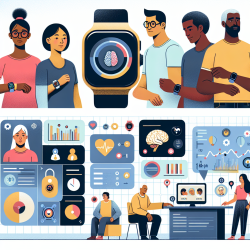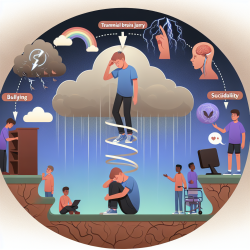In the realm of speech-language pathology and special education, the importance of accurate measurement cannot be overstated. The insights from Rebecca L. McCauley's article, "Measurement as a Dangerous Activity," shed light on the complexities and responsibilities involved in the measurement process within clinical practices. This blog aims to guide practitioners in improving their skills by implementing the outcomes of McCauley's research or by encouraging them to delve deeper into this critical subject.
Measurement in behavioral sciences, including speech-language pathology, is defined as the systematic assignment of numbers or categories to behaviors to represent properties of those behaviors or the individuals exhibiting them. While standardized tests are often equated with measurement, McCauley emphasizes the variety of measures used in clinical settings, including nonstandardized instruments, clinician-developed measures, and even those invisible measures that contribute to clinical judgment.
The inevitable connection between measurement and clinical action is what makes measurement a potentially dangerous activity. The quality of clinical action depends on the quality of measurement, highlighting the critical role of validity and reliability in this process. Validity refers to the degree to which a measure reflects the property it intends to measure, while reliability concerns the consistency of a measure under different conditions.
McCauley argues that neither test developers nor users are solely responsible for the dangers associated with measurement. Instead, it is a shared responsibility that demands attention from both parties. She proposes at least four steps to minimize these dangers:
- Professional and Research Attention: There is a need for greater attention to measurement of all types, both formal and informal, in professional practice and research.
- Research into Clinical Decision-Making: Increased research into the actual processes by which measurements are made and used in clinical decision-making is essential.
- Constructive Communication: Test consumers should increase their constructive communications with test developers to improve the quality of information available for test users.
- Individual Clinician Efforts: Clinicians must work to improve their own knowledge and implementation of measurement principles.
The dangers associated with measurement not only have implications for individual clients and clinicians but also for the profession as a whole. These include threats to the profession's stature and its ability to conduct valid research on communication-disordered individuals. McCauley's insights underscore the necessity for the speech-language pathology field to be well-trained in measurement to advance the quality of clinical practice and research.
For practitioners, understanding and applying the principles discussed by McCauley can lead to more accurate diagnoses, effective treatment plans, and ultimately, better outcomes for clients. It is a call to action for continuous professional development, critical examination of measurement tools, and a collaborative effort to enhance the quality of clinical measurement.
In conclusion, while measurement is an inevitable and potentially dangerous aspect of clinical practice, there is much that individual clinicians and the profession as a whole can and should do to mitigate these risks. By embracing a culture of critical evaluation, ongoing learning, and professional collaboration, practitioners can enhance their clinical decision-making processes and improve the lives of those they serve.
To read the original research paper, please follow this link: Measurement as a Dangerous Activity.










